One of the prettiest Andean cities around, it’s laden with white, polished volcanic rocks. Arequipa is also known for its fiercely independent culture, which is best explored through its markets, museums and local food.
In this Arequipa travel guide, you’ll find some of the very best things to see and do. I’ll also give my own tips having spent time exploring the city!
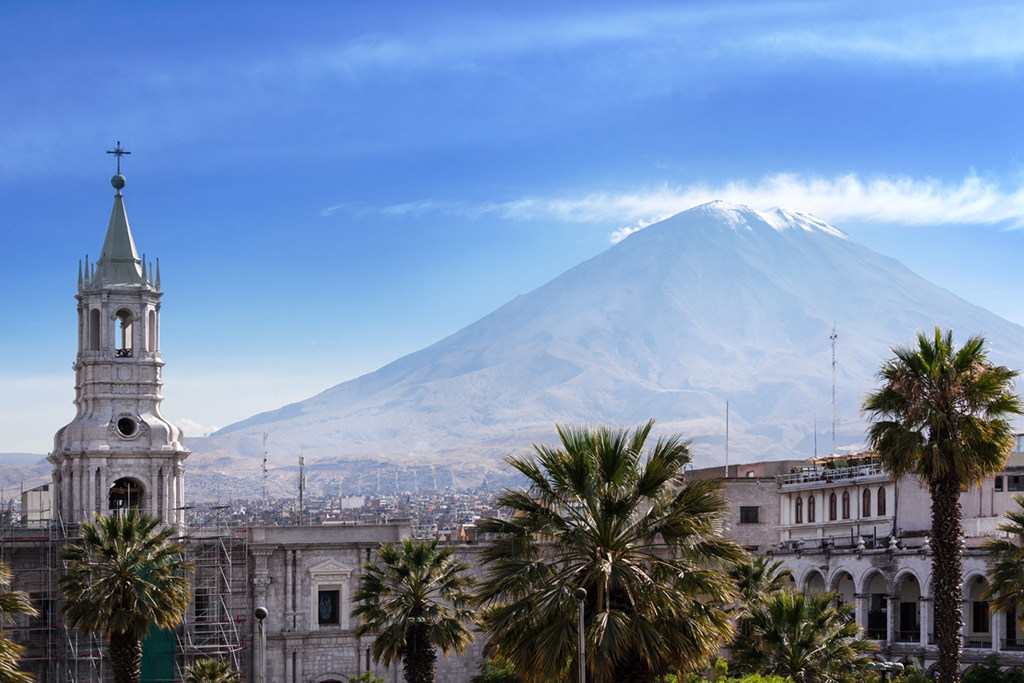
Plan your trip in Arequipa
Things to know about Arequipa
The White City
Known as the white city of Peru, Arequipa tends to stun most travellers with its abundance of beautiful streets and architectural delights.
Most of these have been built using Sillar, which is a volcanic rock that has been excavated from the arid plains that surround Arequipa.
From the Cathedral to the streets that wind through the Yanahuara district, you’ll find many beautiful designs and creations that are made from this beautiful rock.
Unique history
Arequipa also has a fiercely independent culture, even to the extent where they half-jokingly (and half-seriously) offer an Arequipeñan passport.
During the 19th Century, a series of political events shifted Arequipa into becoming the new capital of the country, whilst the rest of the country was under rule from bordering Chile. This created a divide between the regions, with Arequipa being seen as a territory within a territory by the rest of Peru.
This can be best explored through many of its museums, and those who are travelling through Peru on a longer trip will surely also feel the difference to other cities such as Cusco or Lima.
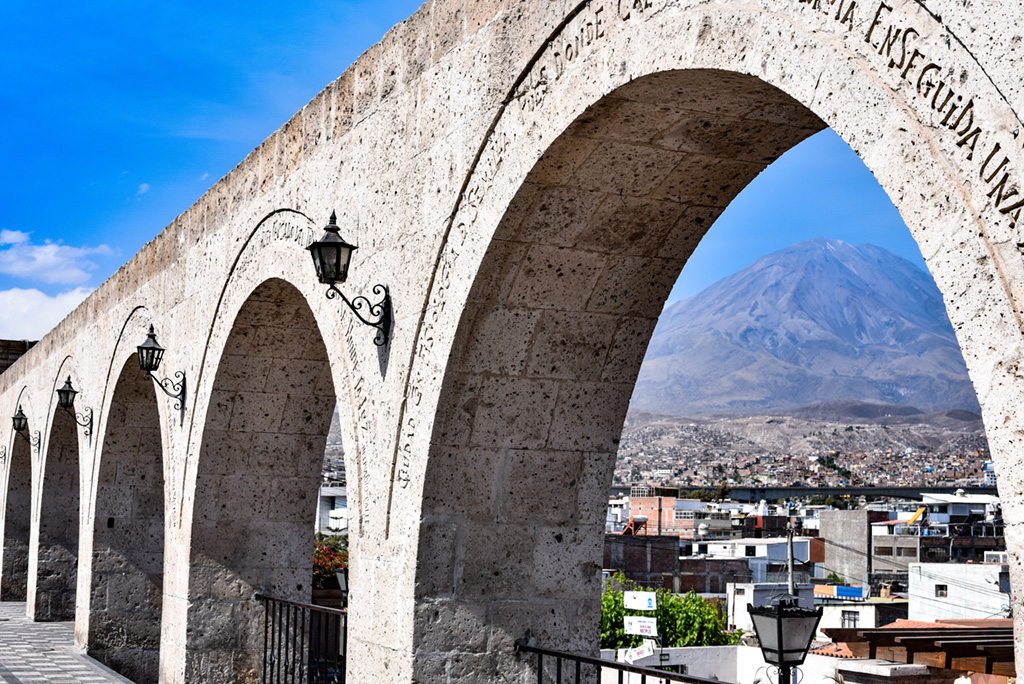
Climate
Lastly, one of the most bizarre things about Arequipa has to be its almost unchanging weather pattern throughout the year.
Located within the same-named region, this area is very arid, surrounded by vast plains of rocky desert and volcanic lands. The Andes mountains are also found here too, which block off incoming clouds and rain giving Arequipa its own unique micro-climate.
Average temperatures here never deviate from between 59-61°F (around 15°C), with midday highs of 70-73°F (22°C) and evening lows of 49-54°F (11°C). There’s very little rain too, with over 300 rain-free days throughout the year! These mostly occur between May and October, but even the wettest months of January and February only see half an inch of precipitation each throughout the month.
Where to Stay in Arequipa
There are two main areas that travellers will want to base themselves in when visiting Arequipa.
The Historic Center is the first one, which is where you’ll find the bustling Plaza de Armas (and the most beautiful one in Peru in my opinion). This area is very safe and full of various restaurants, vibrant markets and worthwhile landmarks. It’s the best place for nightlife in Arequipa too, where you’ll find many great bars and clubs along Calle San Francisco.
If you can afford some luxury, then one of the best places to stay within the Historic Centre is the Casa Andina Select. Located right within the Plaza de Armas, you’ll be staying in a slick and comfortable room, with an on-site restaurant and swimming pool available.
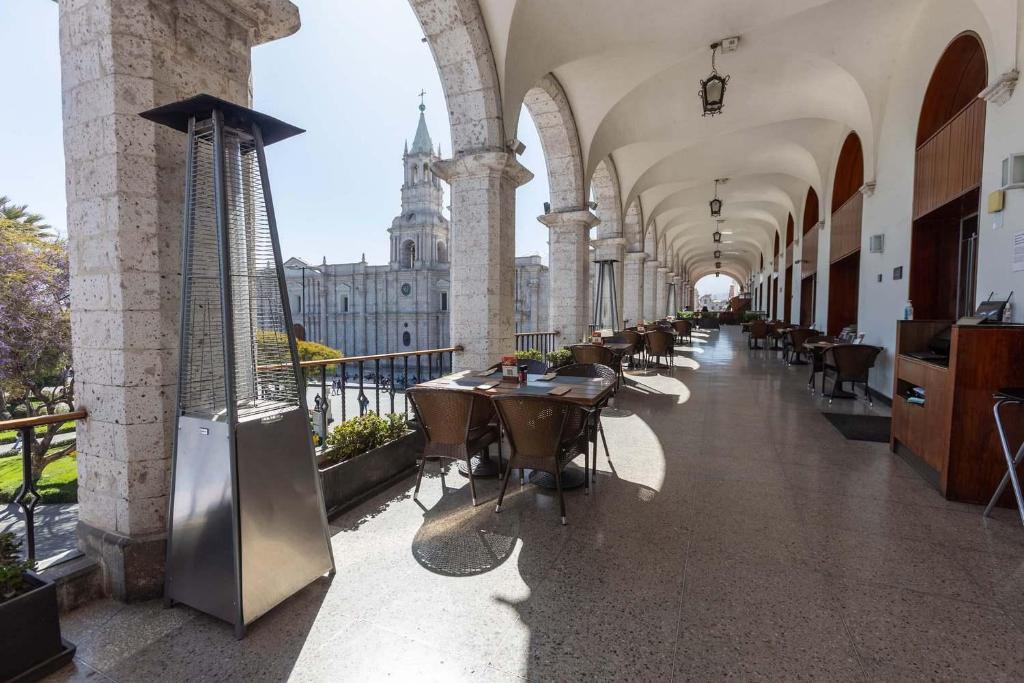
The other area worth staying in is Yanahuara, which is located across the Chili River to the west of the Historic Centre. This area has a more authentic “town” feel to it, with most of the streets being made out of white, crumbling volcanic rocks. Yanahuara is best known for its stunning lookout point (mirador) and has a great selection of accommodation options and restaurants.
For a wonderful boutique hotel in Yanahuara, it’s worth staying in Azul Colonial, which is situated right in the heart of this district. Here you’ll be located within a beautiful and cosy house, with an en-suite bathroom as well as a cafeteria for lunch and dinner.
Best Day Trips from Arequipa
Let’s explore some of the very best day trips that you can easily (and safely) take from Arequipa.
Colca Canyon
One of the deepest canyons on earth, the Colca Canyon is by far one of the best sites you can explore in Peru.
Within these expansive, mountainous ridges you’ll be able to hike along some truly unforgettable paths.
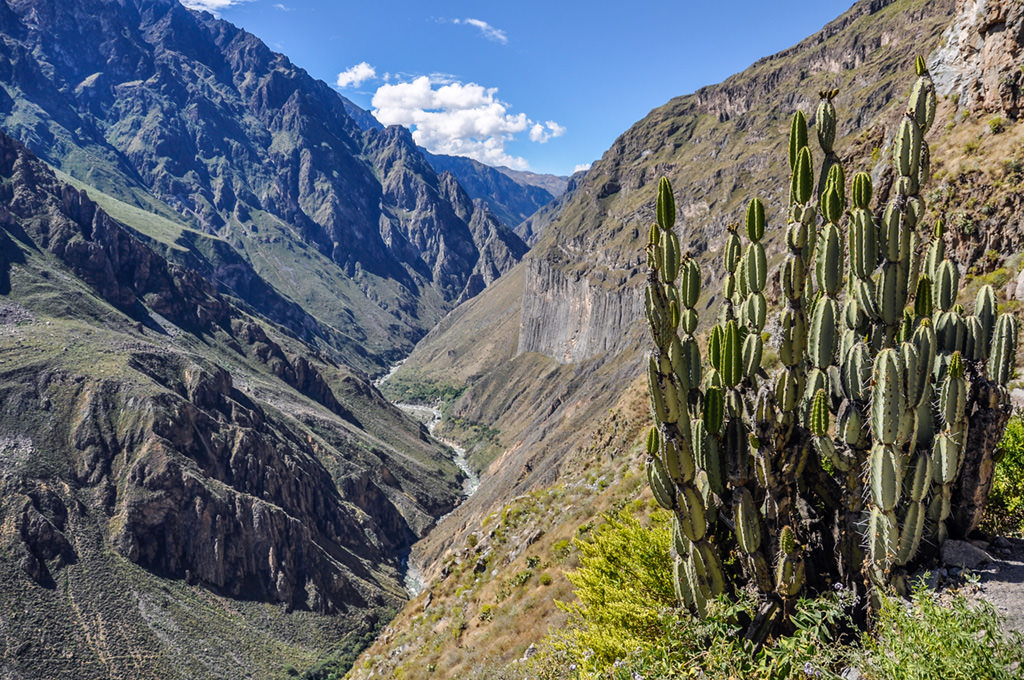
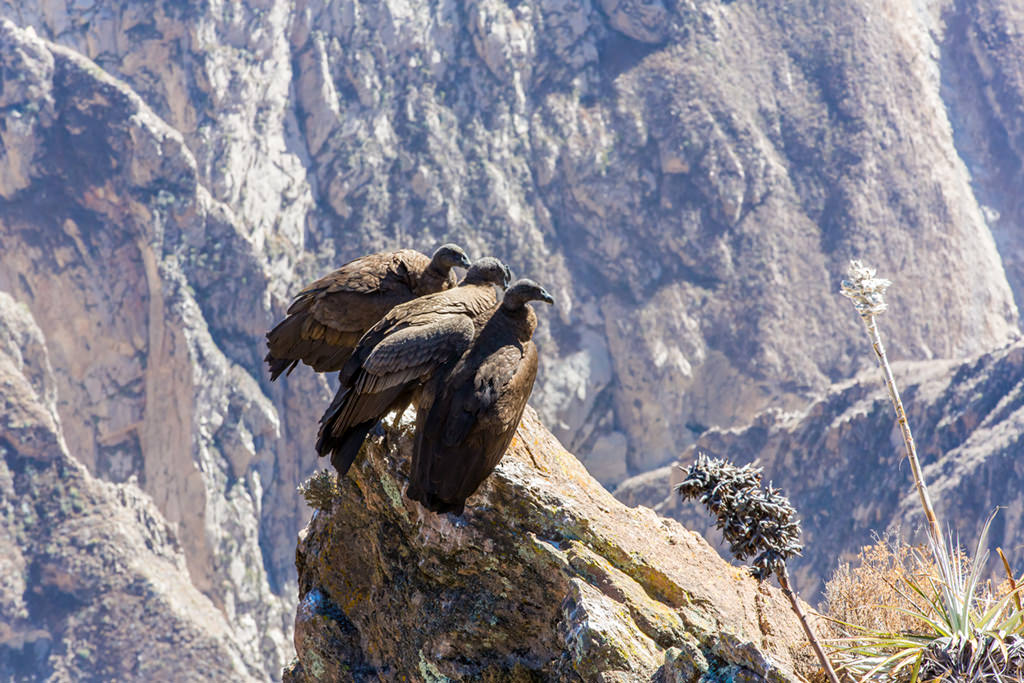
The Mirador Cruz del Cóndor is a must-visit, where you can spot Andean Condors soaring through the skies (at a wingspan of up to 3 metres they are amongst the largest birds on earth).
You’ll also be able to visit the indigenous village of Chivay, which has managed to keep its roots and culture intact despite the Spanish colonial rule.
It’s possible to visit the Colca Canyon independently by taking shuttles to visit different places, hiking the trail by yourself, and staying in Chivay.
However, one of the very best ways to explore this jaw-dropping region is with a tour that already has everything included. The typical tour has you spending two days trekking through the epic canyons. As well as having all meals included, you’ll also stay at the incredible Sangalle — a tropical oasis set within the depths of the Colca Canyon.
Volcano Hikes to El Misti and Chachani
Arequipa is well-known for its imposing volcanoes, which dwarf this otherwise large city from various sides.
Whilst most visitors only take them in from the comfort of a mirador, why not head one step further and climb one of them?
El Misti is by far the most popular, which can either be hiked in a day or with an overnight ascent (2 days, 1 night). At an altitude of 5822 metres it’s no easy business though, and you’ll need to spend at least 48 hours in Arequipa to acclimatise to the higher altitudes.
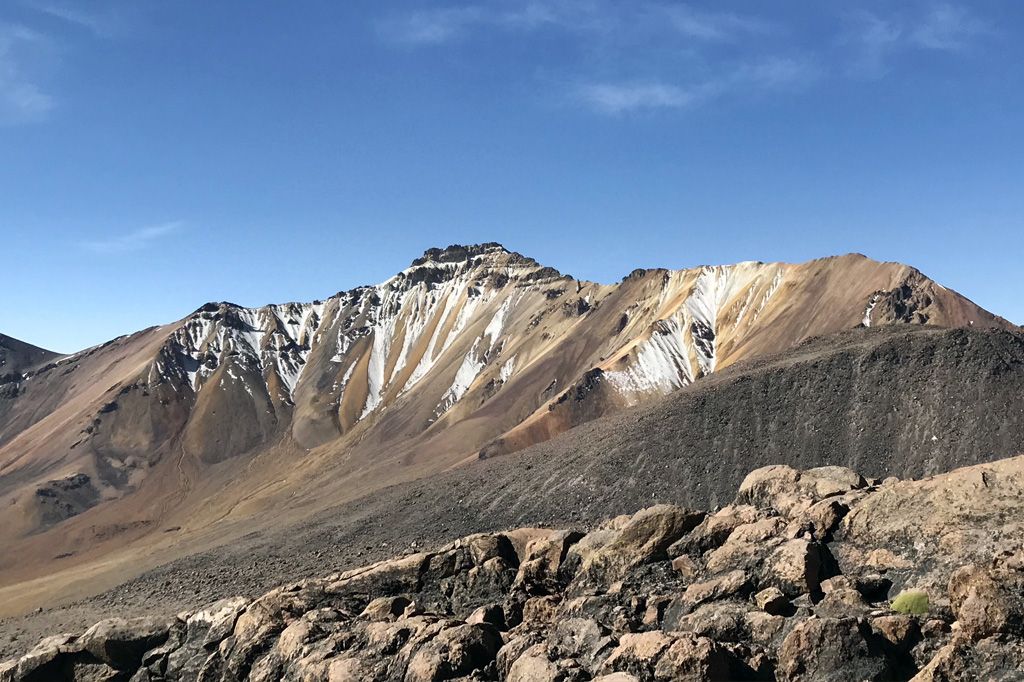
The other, more demanding hike is up to Chachani. At a more dizzying altitude of 6057 metres, this one tends to be more of a challenge to reach the snow ridge where you can then hike up to the summit (I tried this one and failed epically. Please take the altitude seriously ladies and gents!).
If you’re quite flexible with dates, then you can easily book a hiking tour on the day. There are numerous tour agencies that surround the Plaza de Armas. Those with less time will want to book in advance, with this 2 Day Hike up to El Misti being a great option.
Sillar Valley
Of all the day trips (or even tours within Arequipa) that you can do, I’d personally recommend doing this one before all others.
This is because the Sillar Valley is essentially the beating heart of all things architecture and design in Arequipa, from where the pretty Sillar rock is excavated from.
Within the valley, we’ll find this shiny white stone in abundance, which is made up of ash and volcanic fragments which were released during one of the many eruptions from these volcanoes.
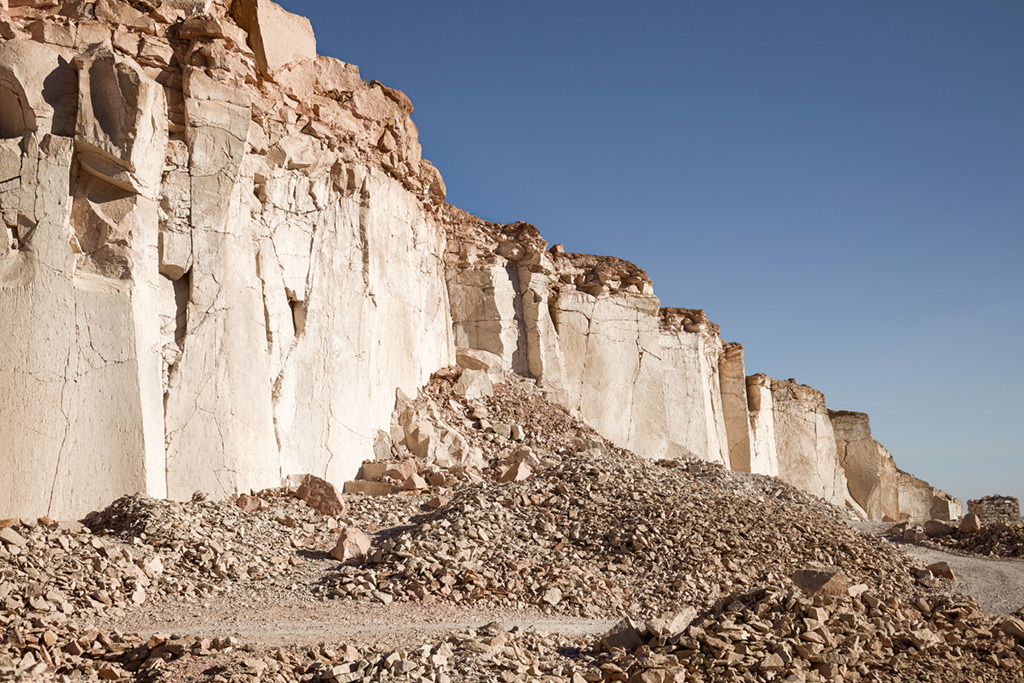
Here you can walk within the ridges and canyon formations, which are perfect for getting a nice photo inside. Afterwards, you’ll be able to explore a valley with many carved-out sculptures from the rock, such as an owl as well as the infamous scripted cliffs.
Like with the volcano hikes, you can also book a trip to the Sillar Valley on the day (it’s even more flexible with various departing times, given the tour is usually around 5 hours). I also highly recommend booking this half-day tour, where you’ll have a professional guide show you the site, as well as visit the Yanahuara and Carmen Alto miradores.
Top 7 Things to do in Arequipa
Now let’s take a look at the very best things you can do in Arequipa (and within its immediate surroundings).
1. See the Historic Centre’s architectural delights
Given that this city has been etched out of white rocks and other volcanic gems, one of the main things to see in Arequipa has to be the unique buildings and network of streets.
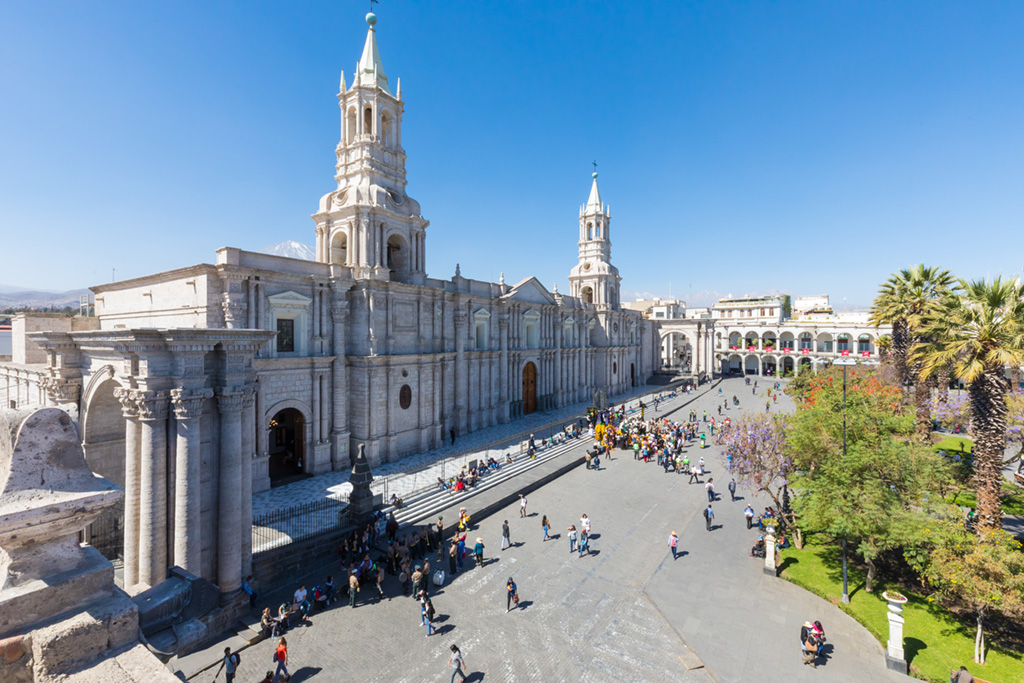
Whilst there are other worthwhile neighbourhoods to explore such as San Lázaro and Cayma, the Historic Centre is the first that you’ll want to head to.
Our first stop will be in the Plaza de Armas, which is a leafy square with a picturesque fountain located at its heart. Here we can see the stunning Basilica Cathedral, with its white spirals towering above all other buildings in sight.
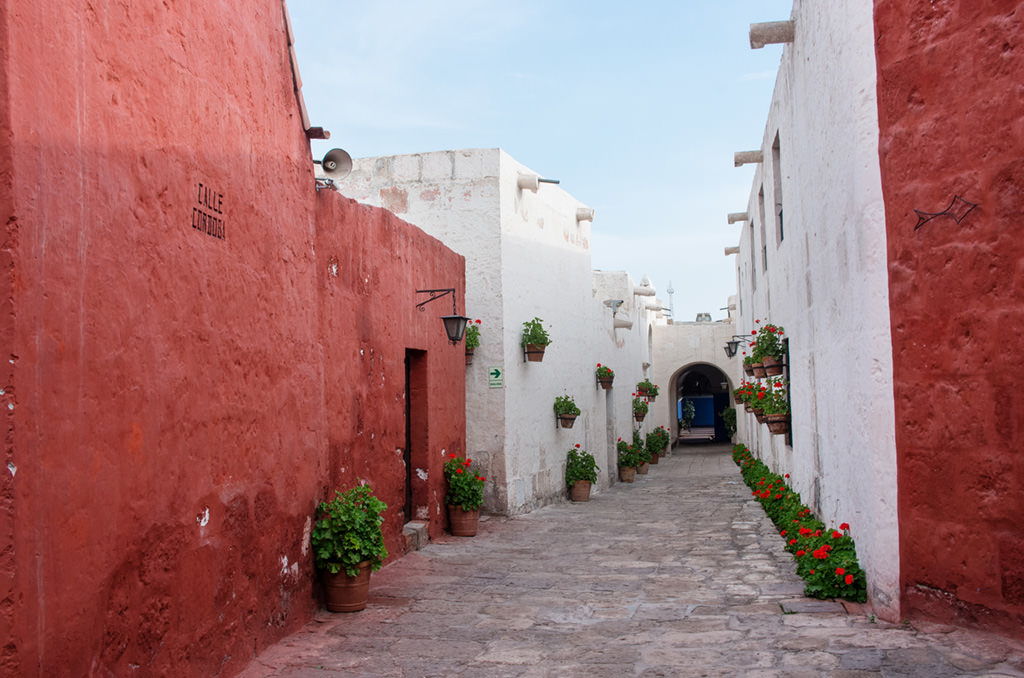
From here we can then take a short walk over to the Santa Catalina Monastery, which is known for both its incredible design and also a more dark past. Built in the 16th Century, it has been home to many nuns of the Dominican Order, and has since been occupied in spite of numerous earthquakes that have partially destroyed different areas of the complex.
Out of the 450 women that once lived here, only a third were actually nuns — whilst the rest were local Andeans who worked as either servants or slaves to the nuns.
2. Dive into the local Arequipeñan Food Scene
Peruvian food is highly diverse. And there’s a good reason why it’s quickly growing into one of the most sought-after cuisines on Earth.
Whilst you can try many tasty dishes from around the country, Arequipa itself has many worthwhile foods and drinks that you’ll want to sample when in town.
Lomo Saltado is known as a Peruvian staple, though it was actually born here and so it’s the best place to try the most authentic version. You’ll find plenty of local restaurants along the Calle Pte. Bolognesi that serve up this incredible dish, whilst those who are after a more deluxe experience can head to the globally-acclaimed restaurant of Chicha by Gastón Acurio.
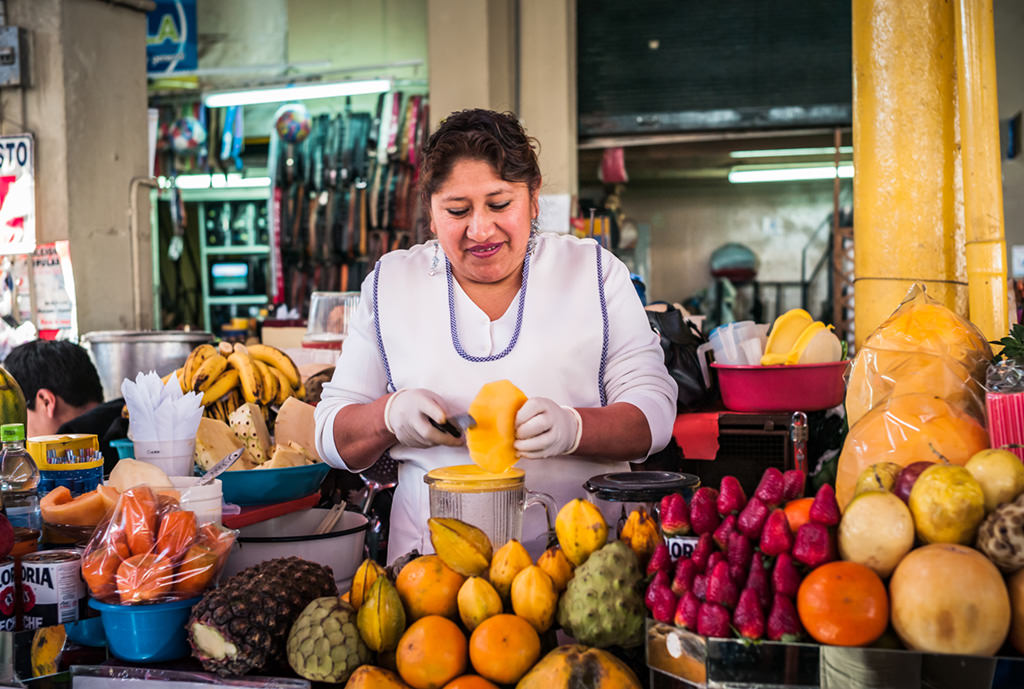
Another novel way of getting to know local foods (as well as the culture too) is by heading to the San Camilo Market. The main market in town, here you’ll find a tonne of locals selling their very best produce. It’s also a great place to pick up meats and fruits when preparing your own meals.
Wander around enough and you’ll also find some more bizarre specialities too, such as the infamous Cuy (Guinea Pig) that forever remains an integral part of traditional Andean cuisine.
Another great way to explore the cuisine of Arequipa is with a guided food tour. Here you’ll try everything from Aji de Gallina and Ocopo to Cuy (don’t worry it’s an optional dish!) to traditional Arequipeñan desserts such as Queso Helado.
3. Learn through its Andean Museums
Whilst many know about the Spanish rule of this city, what isn’t so well known is that human settlement began in these lands some 5000 years ago during the Palaeolithic Era.
Evidence of this can be found in cave paintings at various sites in the region (such as the Toro Muerto). Since then it has been occupied by civilisations such as the Aruni and later the Incas, up until the Spanish Conquest.
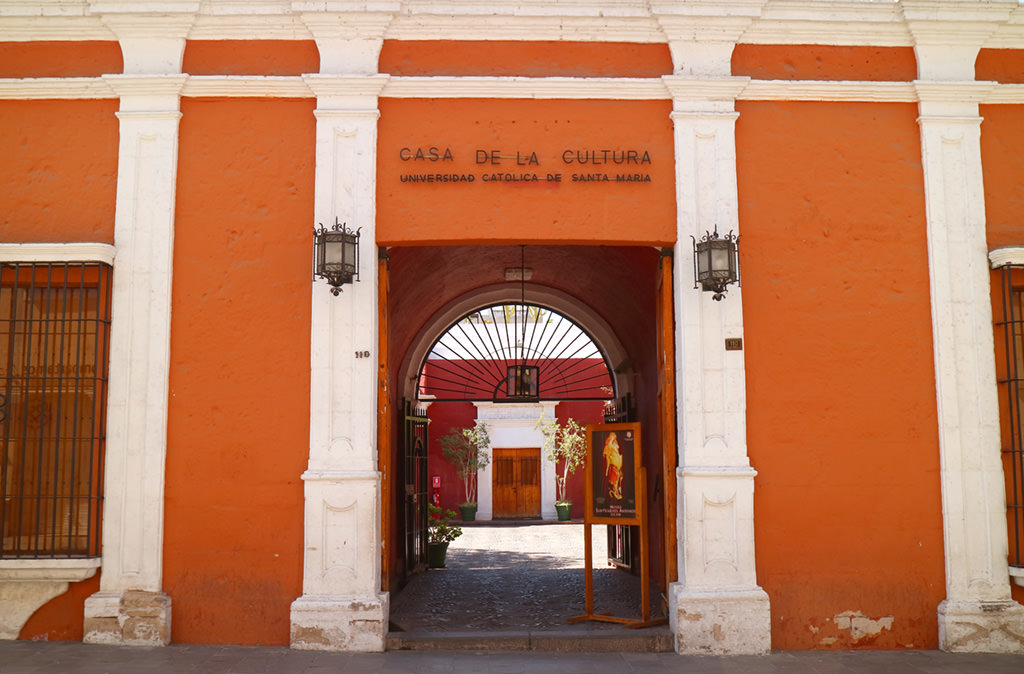
During this long period, there have been many key findings that have made their way into the local museums, with the most notorious being the Juanita Mummy within the Museo Santuarios Andinos — a sacrificed child found at the foot of the Ampato Volcano.
At the museum, we can learn about both the gruesome (and not-so-gruesome) traditions and customs and see various weapons, pottery and textiles that have since been found and preserved.
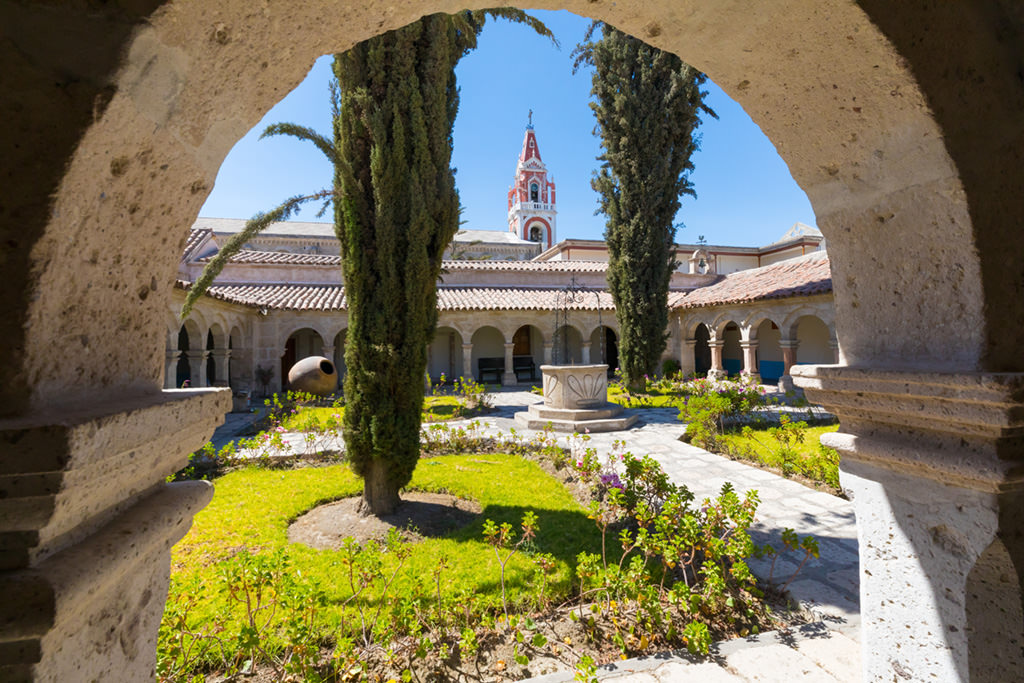
Another museum that’s worth visiting is the Recoleta Monastery, which is a 17th Century convent constructed out of a variety of contrasting architectural styles. It’s full of many religious and cultural artwork, ranging from historical Andean paintings to imported pieces from the more remote Amazonian regions of Peru.
4. Meet Alpacas in the Mundo Alpaca
No trip to Peru can be complete without meeting the more “furry” local residents. And when in Arequipa there’s no better place to do this than by heading to the Mundo Alpaca Center, where you’ll see dozens of alpacas roaming around.
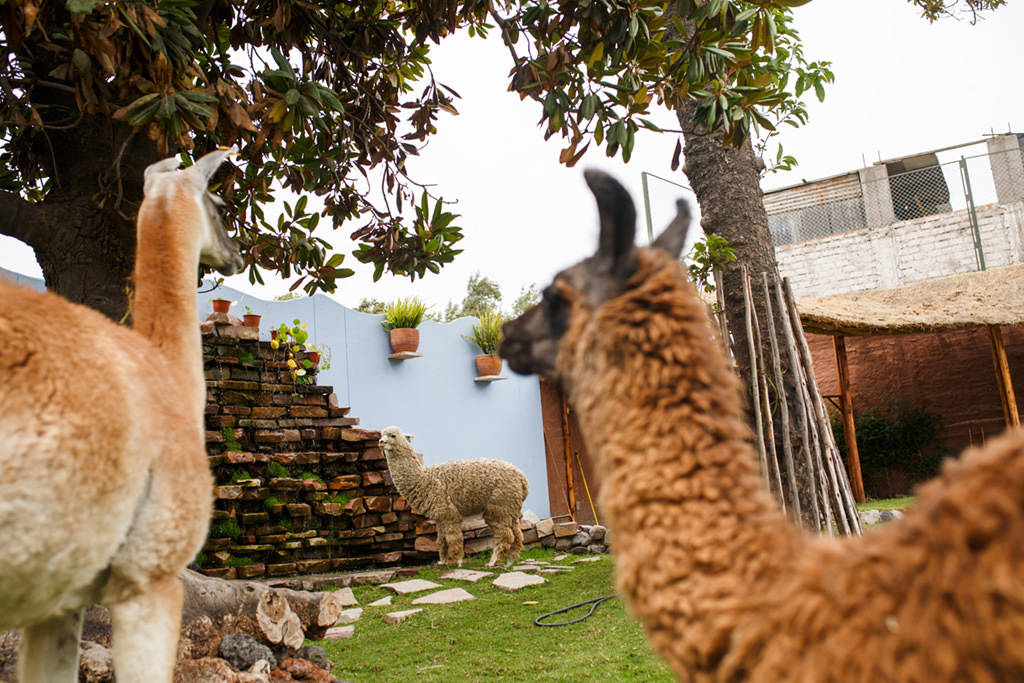
On-site you’ll also find the pre-Columbian textiles museum, where you can see some of the oldest woven garments from this area of Latin America, as well as learn how it’s made too.
One of the best things about this place (and why I always recommend coming here) is that there is no cost to enter. They do accept donations which helps them grow, and this is one particular place that I feel really does deserve an extra helping hand.
To get to Mundo Alpaca you’ll first need to head 6 blocks north of the Plaza de Armas until you reach the Ovalo de San Lázaro, from which it’s just a short walk.
5. Go White Water Rafting along the Chili River
When exploring Arequipa, you’ll most likely pass along the bridge above a river (that connects the Historic Centre to the Yanahuara district). This river is called the Chili River, and is one of the best-known and important rivers within the region of Arequipa.
It’s also the perfect place for adventure enthusiasts, who can go white water rafting here and enjoy the Class II – IV rapids (which vary depending on the stretch of river you ride along). Even if you’re experienced, it’s still best to go with an organised tour given the risks of trying a new river by yourself.
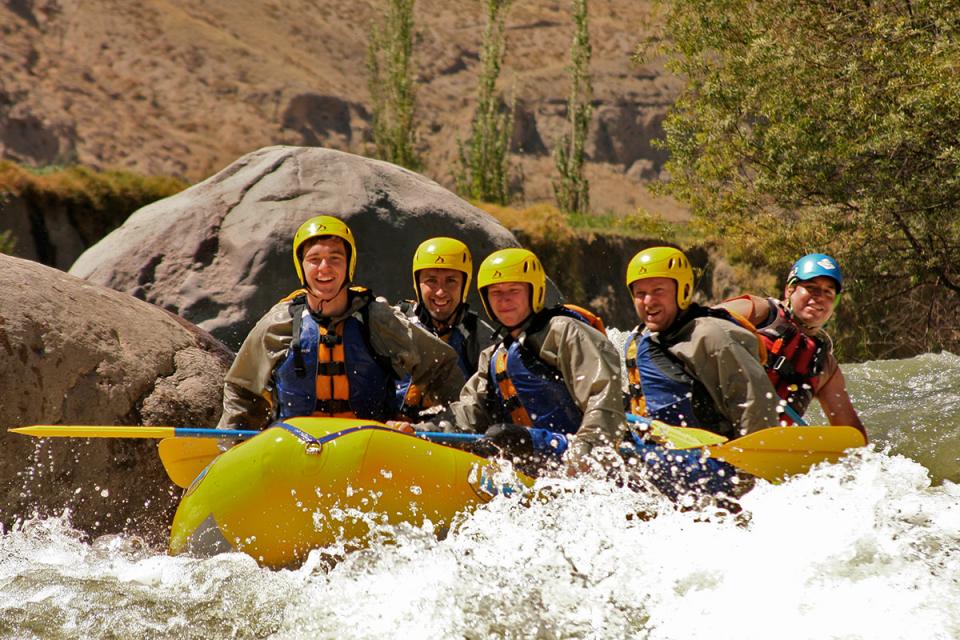
This whitewater rafting tour is one of the best options that you can head on, where you, your group and activity leader will spend 2 hours having the thrill of your lives as you ride down these waters.
Along the way you’ll also be able to enjoy some truly breathtaking views of the surrounding landscapes, which include volcanic rocks and distant peaks. With this tour you’ll also have all transport to and from the site, bottled water as well as all necessary equipment.
6. Walk around the Yanahuara District
As already mentioned earlier in this guide, Arequipa is well-known for its volcanic surroundings and landscapes.
Many of the buildings found in the city centre are made out of white Sillar rock, and those keen on doing more exploring simply must come to the neighbourhood of Yanahuara.
Located to the west of the historic centre (you’ll need to cross the bridge over the Chili River), you can easily walk here, and the first best place to come to is the Yanahuara Mirador.
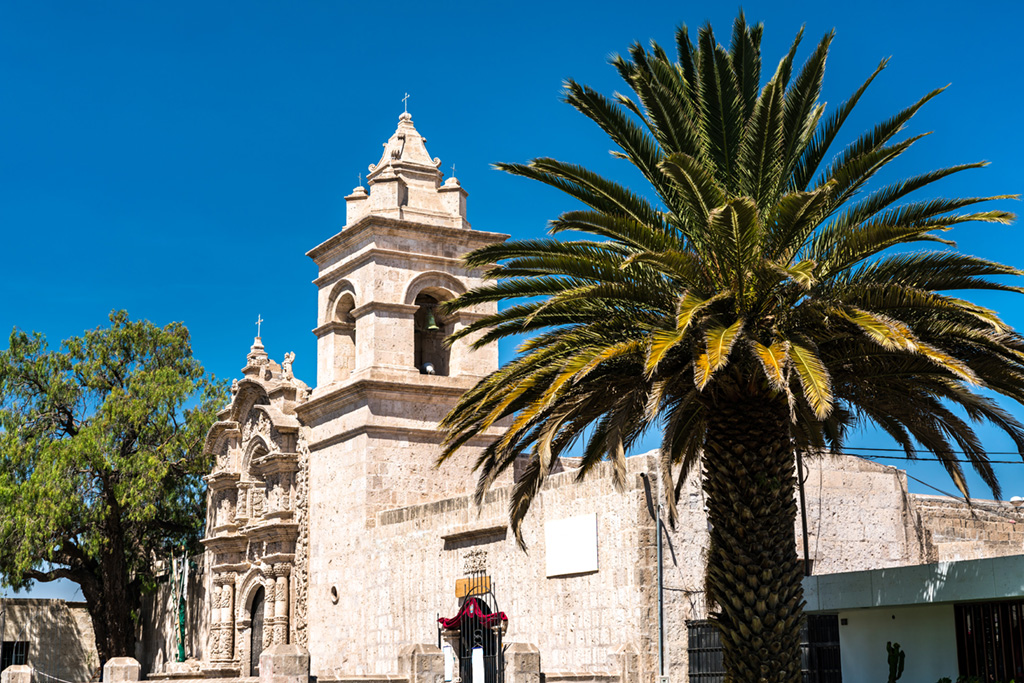
With its stunning half-oval arches and a pretty colonial church, here you can get some of the very best views over Arequipa. Within the plaza you’ll also find many vendors selling Queso Helado, which is a regional dessert that you simply must try!
From here you can then start exploring the streets where you’ll see plenty of shiny-white buildings, as well as an amazing network of cobblestone streets that wind through this colonial district.
I recommend coming here in the early morning if you want the place to yourself, where you can get some insane views over Arequipa from the Mirador. The evening is great too for a sunset snap – although keep in mind that you’ll have many crowds to contend with!
7. Enjoy the vibrant Nightlife Scenes
Those who love a good beer and boogie will really enjoy what’s on offer in Arequipa. I’d even go as far as saying that this city can also rival the scenes of those found in Cusco and Máncora too!
The epicentre is found along Calle San Francisco, which is a narrow street that is located just a couple of blocks north of the Plaza de Armas.
The Sunset Rooftop Bar is a great place to kick things off, from where you can head to La Casona Forum for more antics later into the night. You’ll also find many bars and gastropubs here, as well as within the picturesque street of Pasaje de la Catedral.
Another great area for getting drinks and meeting others is within the Plaza de Armas. A bustling plaza by day, this square transforms into a lively entertainment centre by night.
Along the second-story collection of buildings that surround the plaza, there are many restaurants and rooftop bars worth heading to. One of the very best is Waya Lookout Terraza, which you’ll easily be able to spot given it’s always blaring loud music and has bright lights shining out from the inside.
Arequipa Travel Tips from a Local
First off, the cuisine of Arequipa is by far one of the very best that you can try when in Peru. It’s from here where the ever-popular Lomo Saltado hails (which is a stir fry that is accompanied with rice, potato chips, onions and tomatoes).
Whilst here you’ll also want to try a Quedo Helado. This vanilla-based ice cream is an absolute treat during the hot sunny hours of the day, and you can order one from the traditionally-dressed Peruvian ladies who work in the Plaza de Armas. You’ll also find a shop serving Queso Helado right in the small plaza by the Yanahuara Mirador too.
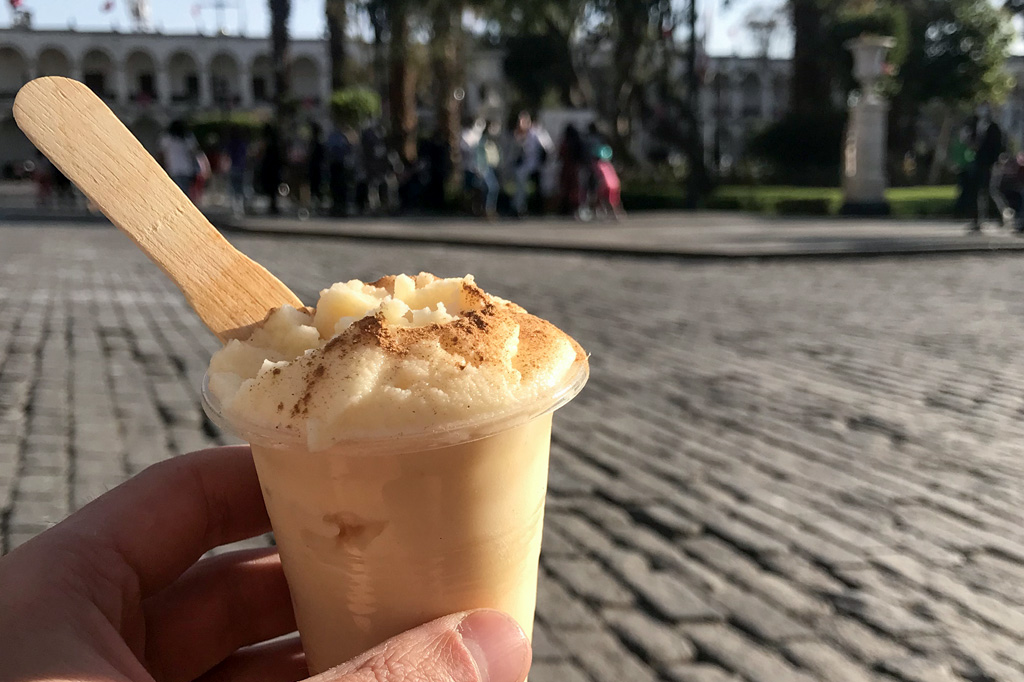
Next up is the altitude. Whilst it’s not the highest city you can travel to in Peru, at 2335 metres it’s still worth taking the first couple of days nice and easy.
Walking around the city you probably won’t feel anything more strenuous than normal, however, it’s very important to acclimatise before heading on a higher-altitude hike (such as to Colca Canyon or one of the volcanoes).
If you don’t, then you may suffer from a condition known locally as Soroche, where you’ll feel nauseous and sick due to the lack of oxygen in the air.
As well as getting naturally acclimated by spending some days in Arequipa, other ways to prevent potential problems include taking Soroche Pills (you can buy these at any Inkafarma) or by using Coca Leaves (which in their unprocessed form are a mild natural remedy rather than a drug).
Some links may be affiliate links, meaning I may earn commission from products or services I recommend. For more, see site policies.
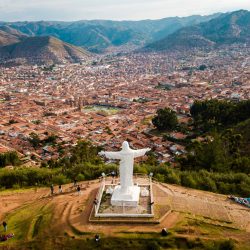
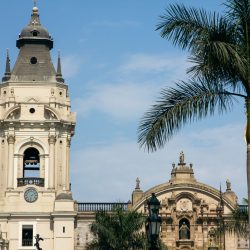




0 comments
Leave a comment
Your email address will not be published. Comments are manually moderated.